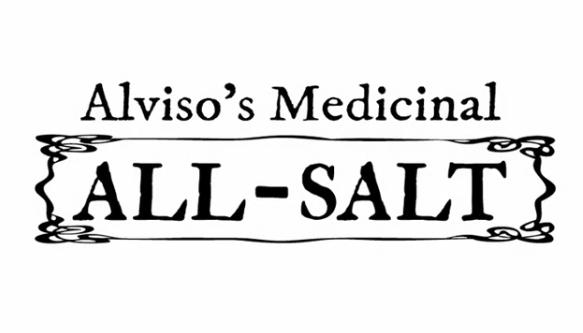 California’s new gold rush has prospectors back in the water, but they’re not panning for metals. This time, it’s all about recycling the painkillers, steroids, and mood stabilizers in South San Francisco Bay.
California’s new gold rush has prospectors back in the water, but they’re not panning for metals. This time, it’s all about recycling the painkillers, steroids, and mood stabilizers in South San Francisco Bay.
Alviso’s Medicinal All-Salt may look like ordinary table salt, but it has a little extra pharmaceutical kick. Exactly which drugs are present is somewhat unknowable, even to those selling the product, since it depends on which ones happen to have been recently flushed down local toilets. That mysterious grab-bag aspect is all part of the fun — unless of course, you happen to get a batch infused with industrial pesticides and flame retardants.
OK, so All-Salt isn’t really a commercial enterprise, despite the quaint and appealing packaging. Jon Cohrs and Morgan Levy, the team behind All-Salt, have a point to make.
Levy is a water management researcher at UC Berkeley. Cohrs is an artist. They have a mutual interest in making environmental issues more accessible, and cooked up the idea for All-Salt about six months ago. To make it, they gather brackish water from the Artesian Slough, which channels water away from the San Jose/Santa Clara Water Pollution Control Plant and into South San Francisco Bay.
“We both wanted to do a locally specific project with broader relevance,” Levy explained. “Water sanitation is a notoriously un-sexy issue, and this is an interesting way to reconnect people with their local and regional water systems, not to mention highlight an important water contamination issue.” The effect of the pharmaceuticals on aquatic life is not fully understood.
The San Jose/Santa Clara plant treats an average of 100,000,000 gallons of wastewater per day. It’s the site of some of the country’s most extensive water-quality testing, and researchers have found that some chemicals make it through the 16-hour treatment process intact — including ofloxacin, carbamazepine, and fluoxetine. Yes, that’s right: at last, you can season your dinner with Prozac.
All-Salt’s a funny ice-breaker, but the science behind the project is solid. Both Levy and Cohrs spent months interviewing water industry insiders, compiling reports, and designing and testing various salt ponds. After some trial and error, they developed a quick workflow for collecting water in buckets, straining particles out with a nylon paint filter, and then letting the salty water evaporate on plastic sheets stretched over a large wooden frame.
So far, the project’s attracted plenty of attention and conversation. Levy’s favorite reaction so far: when a park ranger spotted Cohrs wheeling a dolly full of five-gallon buckets of water out of the Artesian Slough, the body of water near the waste treatment plant, he initially demanded a permit for collecting water. Then he realized that the Park Service’s authority stops just before reaching the sewage plant’s runoff.
Levy hopes the project will be an eye-opener for citizens. “It’s been really fun to research,” she wrote, “and will be even more fun to INGEST. Ha.”
Watch their ad:



